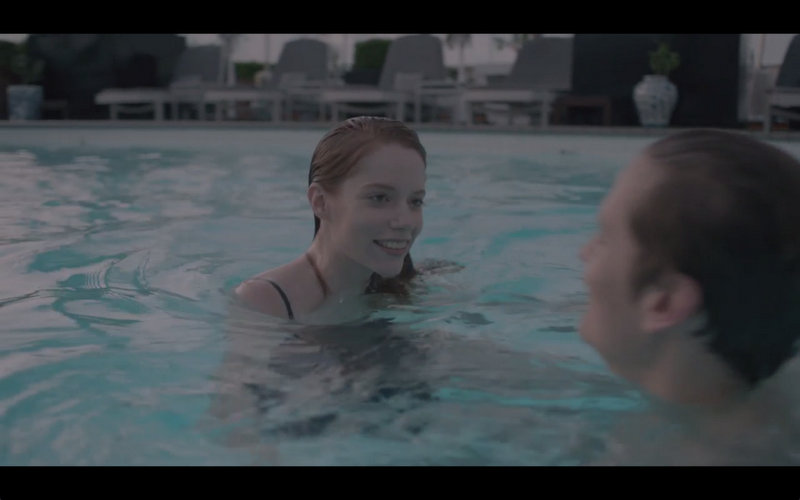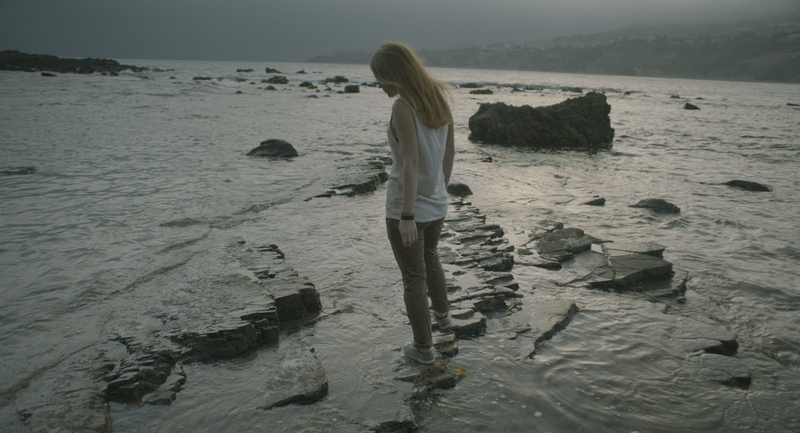[vimeo width=”500″ height=”375″]http://vimeo.com/82480477[/vimeo]
/
In David Cho’s “Where We Are,” the film’s assertive title is betrayed by a montage of images under the dialogue of two lovers who wonder where they might be now, both geographically and emotionally. The title might suggest a destination, a place where we and they will find one another, but the tension between what the characters say and what we see in the film instead reveals that either one or both of the characters would rather not arrive, would rather carry on desiring across the distance between them.
The film’s dialogue is composed of what might be an intimate phone call, non-diegetic sound for an otherwise silent film, separate from the pictures we see. In an interview over at directorsnotes.com, Cho indicates that he saw these voiceless and soundless images to be flashbacks. He connects these to his “themes of separation, distance, and memory” and adds that he’s interested in “blending what characters see in their minds’ eye with reality and the present. It’s something that our minds do so seamlessly and we can fall into daydream without even realizing it.”
Film language, in its most realist forms, cannot show or represent the reality of this stream of consciousness and memory which is so indelible human, so it falls to more formalist, styled film choices to show us what that visually might look like.
The peculiar thing about “Where We Are” is that Cho chooses to shoot the visuals in a more realist, hand held, improvised fashion. On the one hand this captures the randomness of moments in desire, but because these moments are small here and not momentous or overwrought in terms of symbolism or narrative significance, they do not necessarily read like memory.
The visuals have the kind of Terrence Malick style that Nick Schager laments in his Vulture article, and, indeed, the content is visually pleasing but the content is not necessarily distinct, unique, or revealing of character or plot. Yet that is probably the point. These are small happy moments, the kind most easily lost to memory.
Traditional film syntax would Vaseline or blur the lens, but Cho resists this for the most part; the images are warm and sometimes there’s soft focus, but nothing overt. The absence of diegetic sound (relating directly to the action) does to some extent dislocate the images, contain them in a way which makes them more memory like, but there is something insistently present tense about the visuals.
“Do you wonder where I am?” “Do you miss me?” The woman on the call persists with her questions. When the man suggests the woman should come to him, however, she replies, “I’m happy here.” On the most overt level, this is the woman defining her contradictory desires, where she seeks the answer to “Do you miss me?” before she will assert “I am happy here.” Come here / go away. This is Anne Carson’s “sweetbitter,” cultivated by the woman who wants longing more than having. On another level, the dislocated dialogue appears over these memories and the “here” where she is happy could be memory, specifically these memories.
When the man replies with his checkmate question, “Are you? Are you happy with him?” he unfolds a second possible reading of the film, one where he is not the man in the footage. Supporting this, there is no diegetic sound moment where we hear the voice of the man on the call connected to the body of the man in the film. Granted, I am a little oversensitive to these dislocations since I just shot a film on super 8 film that has no sound and then after the fact had to find some way to identify voice overs with bodies in some symbolic fashion. I found, as I find here, that voices divorced from bodies can sometimes be symbolically useful. Here, it adds an indeterminacy: we cannot know if the man who speaks is the man in the film and we cannot know if what we see is the love he once had with her or the love she left him for. The more realist, improvised footage also more readily supports this later interpretation, looking less like memory and more like caught moments.
If it is not memory, then whose perspective? Is it the man’s fearful imagining of how happy she is now with this other man, or is it real, present footage of her current happiness with the man she has chosen over him?
If it’s her perspective, what we see and hear is a woman happy with one man while she longs for another. She lures a declaration of longing from the man in the dialogue while we see her being happy with another man, one who is perhaps oblivious to her duplicitous heart. Then, her last line — when the man asks if she is happy with the man she’s chosen instead of him, when she replies “I love this place” –reads even more like betrayal. She has chosen “this place” over the one who longs for her, and chosen the man she’s with for his place.
Or maybe these are just memories, the title playing off the more Hollywood narrative The Way We Were. Regardless, “Where We Are” ultimately won’t let us know where we are, just leaves us in a space of indeterminacy. All of these interpretations are possible and true. All of these desires, these words, these images, lovely memories or not, suitably point to just how impossible and contradictory desire can be.
— R W Gray
/
/




